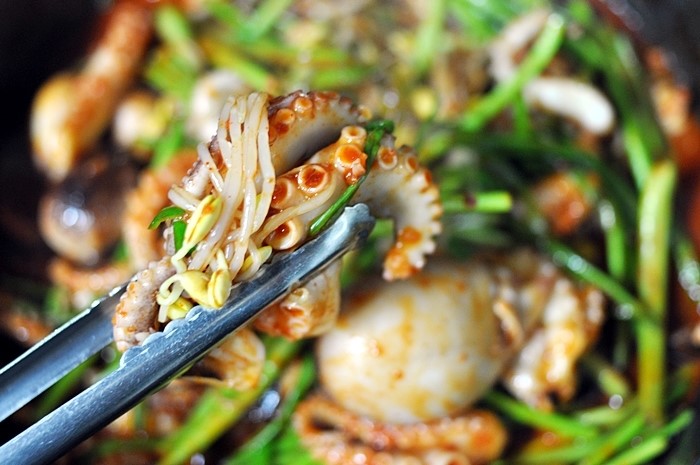
Stir-fried webfoot octopus
I enjoy blanching it white and eating it as Sukhoe, but my family likes stir-fried webfoot octopus the most. Last Friday evening, I ate a lot and stir-fried jukkumi, bean sprouts, and water parsley, which I enjoyed properly with the sauce and rice, and it was even better. It took some time to prepare and prepare, but the children liked the delicious mother's food and thanks to it, I was able to eat a lot. Let's find out how to make stir-fried webfoot octopus and how to prepare it.
4 serving
Within 30 minutes

아베크
- Ingredients
-
-
Webfoot octopus
-
water parsley1pack
-
Bean sprouts2handful
-
Cheongyang red pepper3ea
-
Flour
-
red pepper paste3TS
-
Red pepper powder2TS
-
Korean style soy sauce1TS
-
Sugar1TS
-
crushed garlic1TS
-
- Cooking Steps
-
STEP 1/12Remove the teeth inside the legs of the jukkumi after removing the ink bottle and place it in a bowl. (You need to remove the ink bottle, but you can ask for it when you buy it, or you can take it and turn your head upside down and remove it right away. Remove the eyes of the black ink with scissors.)
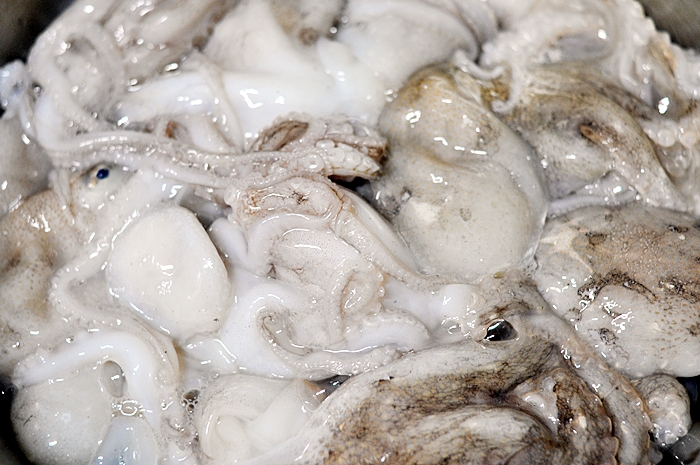 STEP 2/12Add plenty of flour and gently wash it about three times. Curiously, the foreign substances on the sucker come off cleanly and the sticky energy disappears. It's not difficult, but you have to take your time. It takes some time to prepare because there's a lot on this day.
STEP 2/12Add plenty of flour and gently wash it about three times. Curiously, the foreign substances on the sucker come off cleanly and the sticky energy disappears. It's not difficult, but you have to take your time. It takes some time to prepare because there's a lot on this day.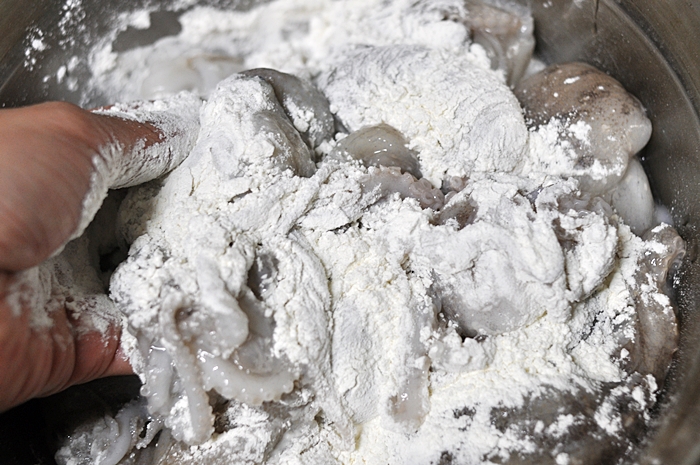 STEP 3/12Wash webfoot octopus well and sift it.
STEP 3/12Wash webfoot octopus well and sift it.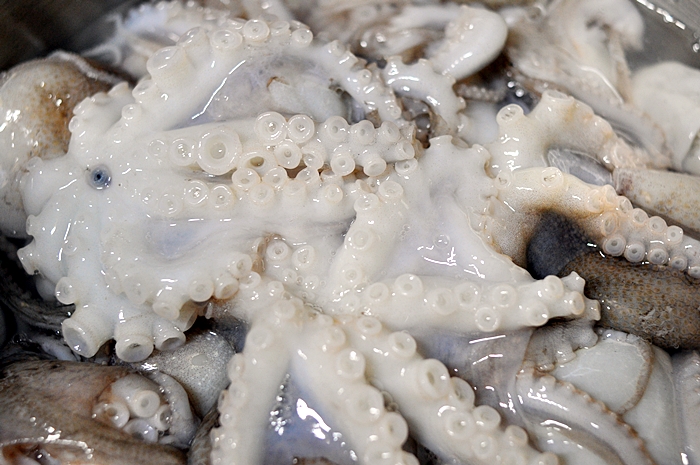 STEP 4/12Wash bean sprouts well, pour cold water, and boil them. (You either open the lid from the beginning or close it to the end, you know?)
STEP 4/12Wash bean sprouts well, pour cold water, and boil them. (You either open the lid from the beginning or close it to the end, you know?)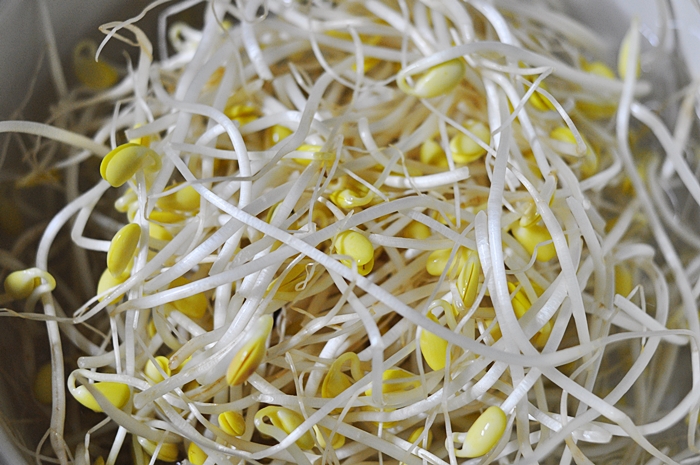 STEP 5/12Prepare water parsley and trim the leaves
STEP 5/12Prepare water parsley and trim the leaves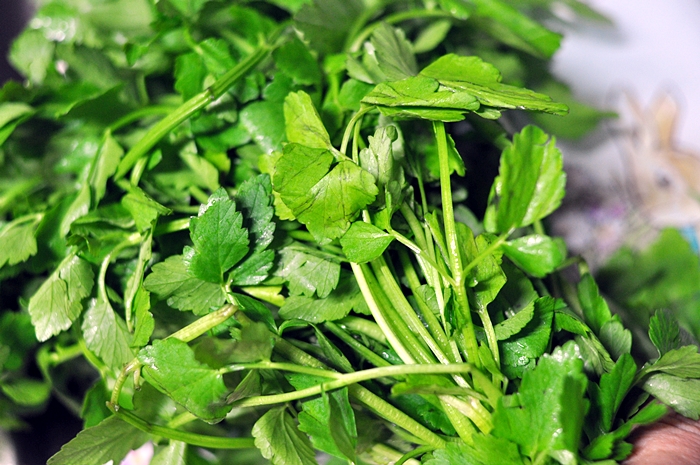 STEP 6/12Cut the stem into bite-size pieces.
STEP 6/12Cut the stem into bite-size pieces.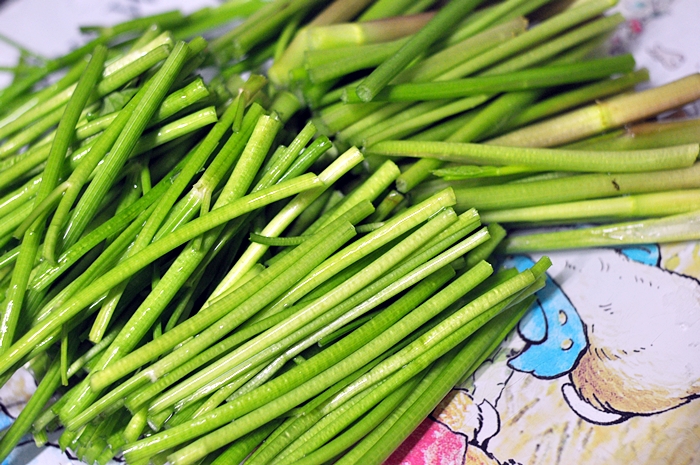 STEP 7/12Blanch webfoot octopus slightly in boiling water. Blanch it without boiling it. (Put the boiled water in the cold water first and put it in the boiling water.)
STEP 7/12Blanch webfoot octopus slightly in boiling water. Blanch it without boiling it. (Put the boiled water in the cold water first and put it in the boiling water.)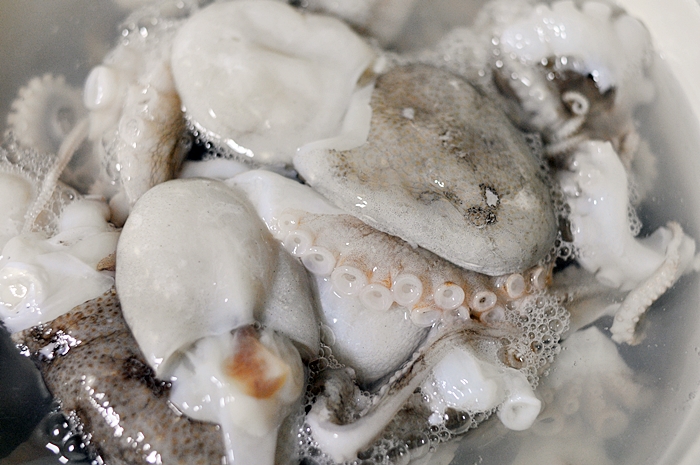 STEP 8/12Add 2/3 of the seasoning and season the blanched webfoot octopus.
STEP 8/12Add 2/3 of the seasoning and season the blanched webfoot octopus. STEP 9/12Place boiled bean sprouts on top of seasoned webfoot octopus
STEP 9/12Place boiled bean sprouts on top of seasoned webfoot octopus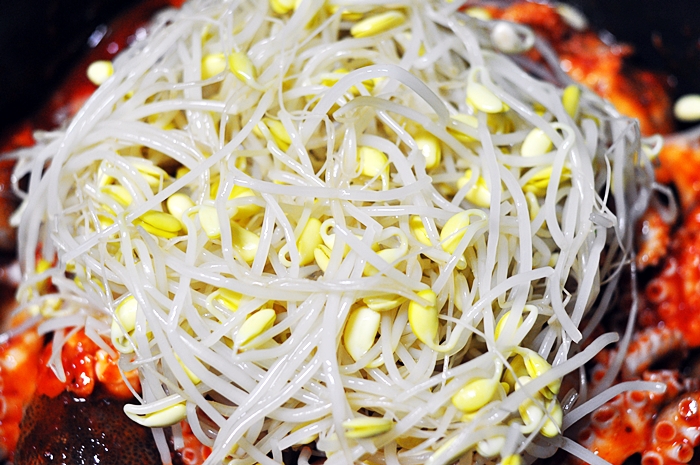 STEP 10/12Mix it well.
STEP 10/12Mix it well.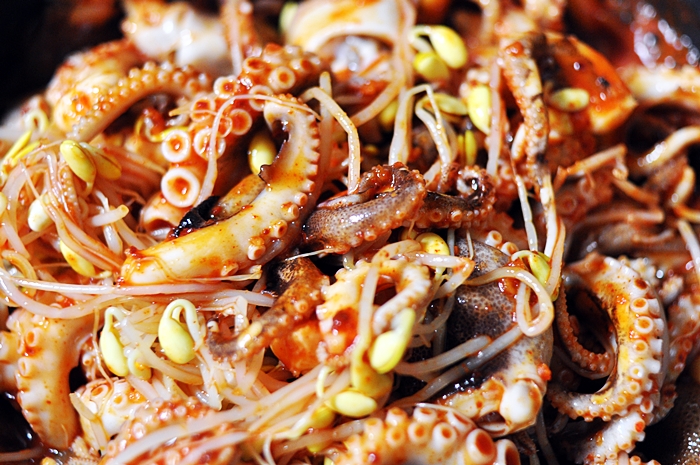 STEP 11/12Stir-fry jukkumi and beanstalk together, then put the minari on top, add the remaining seasoning, and then chop up the cheongyang pepper.
STEP 11/12Stir-fry jukkumi and beanstalk together, then put the minari on top, add the remaining seasoning, and then chop up the cheongyang pepper.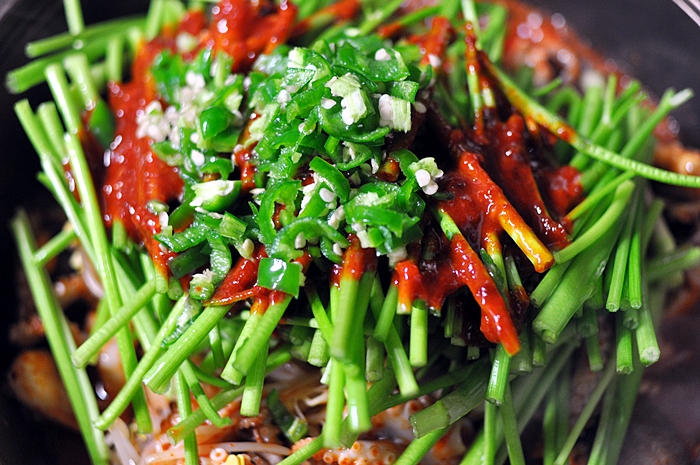 STEP 12/12Add the water parsley and stir-fry it for 3 more minutes, and put it off the heat. That's it. If you stir-fry the water parsley too much, it will get tough and watery, so you can cook it a little and then lower the heat to enjoy it. Adjust the stir-fried webfoot octopus seasoning according to your preference for spicy food, and add rice, seaweed, a few drops of sesame oil, and stir-fry it well so that it doesn't burn. Stir-fried webfoot octopus is delicious, but you know that seasoned webfoot octopus fried rice is also a delicacy, right?
STEP 12/12Add the water parsley and stir-fry it for 3 more minutes, and put it off the heat. That's it. If you stir-fry the water parsley too much, it will get tough and watery, so you can cook it a little and then lower the heat to enjoy it. Adjust the stir-fried webfoot octopus seasoning according to your preference for spicy food, and add rice, seaweed, a few drops of sesame oil, and stir-fry it well so that it doesn't burn. Stir-fried webfoot octopus is delicious, but you know that seasoned webfoot octopus fried rice is also a delicacy, right?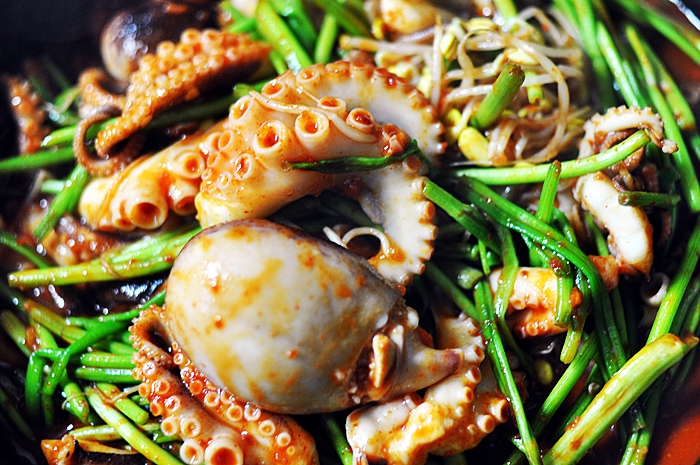
- Cooking review
-
5.00score
-
 800*****scoreYeah, thanks to you, I'm making it delicious I ate it.~^~^2022-04-10 18:42
800*****scoreYeah, thanks to you, I'm making it delicious I ate it.~^~^2022-04-10 18:42 -
 567*****scoreI followed the recipe and ate it deliciously.I was complimented that my mom's skills^^2020-04-21 19:53
567*****scoreI followed the recipe and ate it deliciously.I was complimented that my mom's skills^^2020-04-21 19:53
-
- chicken Recommended recipe
-
-
1
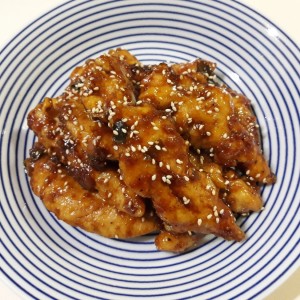 Making soy sauce chicken Kyochon slap sauce :)4.81(63)
Making soy sauce chicken Kyochon slap sauce :)4.81(63) -
2
 How to make Jongwon Baek seasoned chicken sauce. Making seasoned5.00(23)
How to make Jongwon Baek seasoned chicken sauce. Making seasoned5.00(23) -
3
 Making Kyochon Chicken - Soy Sauce Seasoned Chicken4.76(21)
Making Kyochon Chicken - Soy Sauce Seasoned Chicken4.76(21) -
4
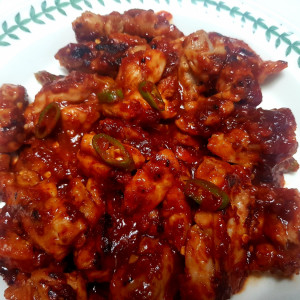 Imitating Zikova Chicken4.78(9)
Imitating Zikova Chicken4.78(9)
-
- Bibimbap Recommended recipe
-
-
1
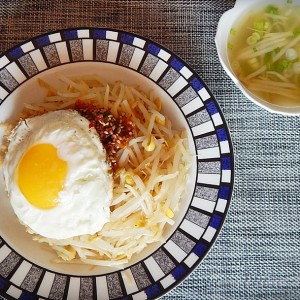 When there are no side dishes, "Bean sprout bibimbap" is the tru4.97(94)
When there are no side dishes, "Bean sprout bibimbap" is the tru4.97(94) -
2
 The secret of bibimjang sauce that makes bibimbap delicious5.00(13)
The secret of bibimjang sauce that makes bibimbap delicious5.00(13) -
3
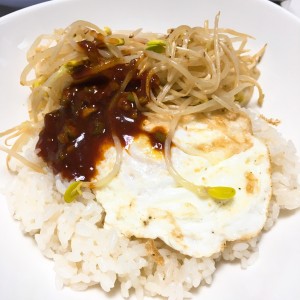 Super simple bean sprout bibimbap4.95(20)
Super simple bean sprout bibimbap4.95(20) -
4
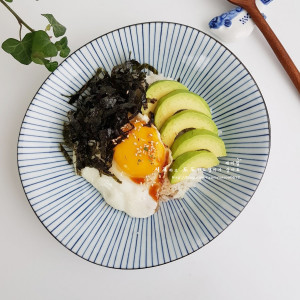 Avocado and egg bibimbap4.94(51)
Avocado and egg bibimbap4.94(51)
-